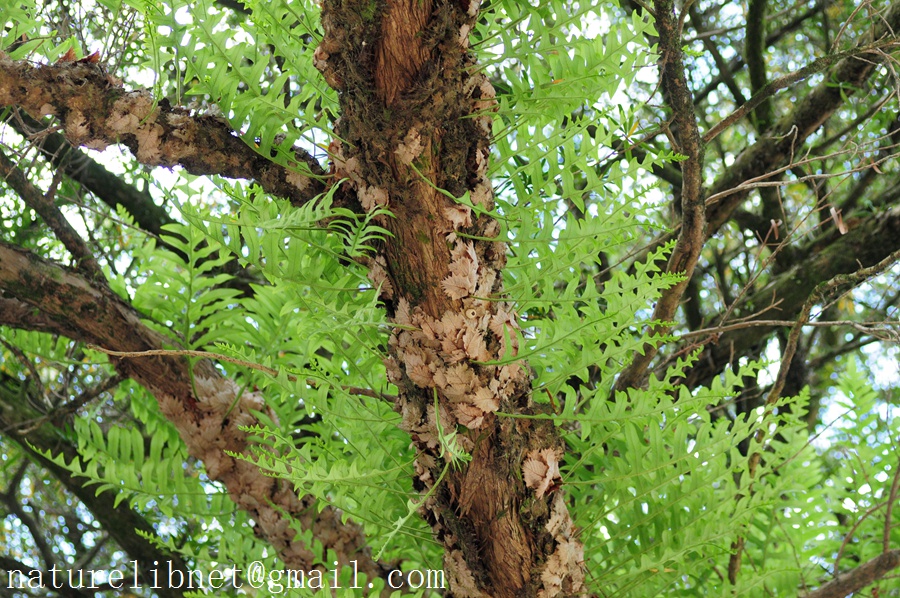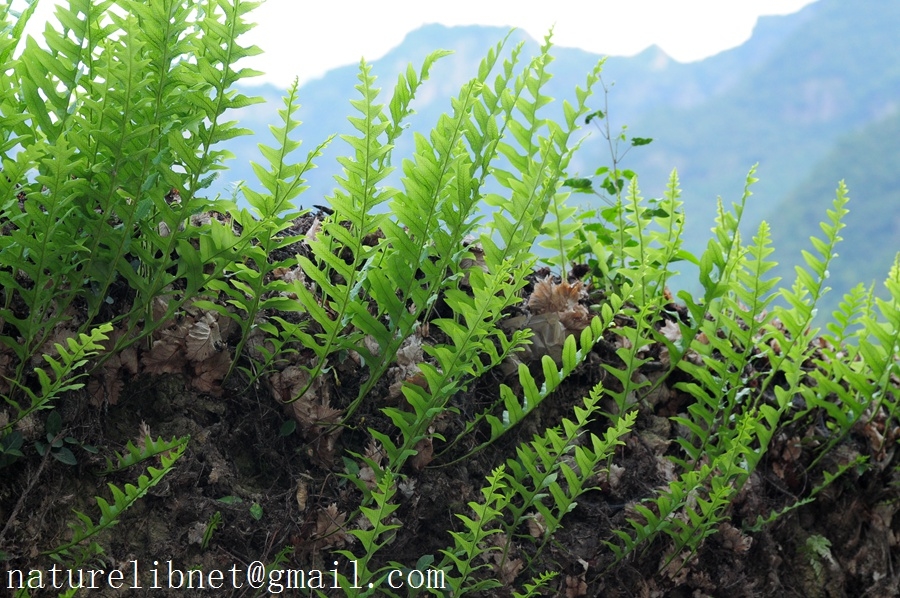- Scientific Name: Drynaria roosii Nakaike
- Ref: New Fl. Jap. Pterid. 841. 1992
- Synonym: Polypodium fortunei Kunze ex Mettenius, Abh. Senckenberg. Naturf. Ges. 2: 121. 1856, not (T. Moore) E. J. Lowe (1856); Drynaria fortunei (Kunze ex Mettenius) J. Smith (1857), not T. Moore (1855).
- English Common Name: Oak Fern
- Chinese Common Name: 槲蕨 hújué
- Japanese Common Name: ハカマウラボシ [袴裏星] hakamauraboshi
- Family: Polypodiaceae
- Genus: Drynaria
- Distribution: Epiphytic or epilithic, often on limestone, or on buildings; 100-1800 m. Anhui, Chongqing, Fujian, Guangdong, Guangxi, Guizhou, Hubei, Hunan, Jiangsu, Jiangxi, Sichuan, Yunnan, Zhejiang [India (Assam), N Thailand, Vietnam].
- Photo: 10/04/2010,Mt.Jiulong,Suichang
- Note:The rhizome of Drynaria roosii is used in traditional Chinese medicine as a medicinal herb, known as a kind of “gǔ-suì-bǔ” normally derived from Davallia. This species was widely known as Drynaria fortunei (Kunze ex Mettenius) J. Smith, but this is a later homonym of D. fortunei T. Moore (=Microsorum fortunei (T. Moore) Ching.).
Rhizome shortly creeping, 1-2 cm in diam.; scales peltate, 7-12 × 0.8-1.5 mm, margin dentate; fronds dimorphic, glabrous; basal fronds overlapping, sessile, (2-)5-9 × (2-)3-7 cm, base cordate, shallowly lobed to 1/3, abaxially sparsely hairy; foliage fronds stalked, stipe 4-7(-13) cm, conspicuously winged; lamina pinnatifid up to 2-5 mm from costa, 20-45 × 10-15(-20) cm, apex aborted or not; pinnae 7-13 pairs, slightly ascending, lanceolate, 6-10 × (1.5-)2-3 cm, margin obscurely dentate, apex obtuse or acute. Sori in 2-4 rows between costa and margin, 1 row between lateral veins, paraphyses many, glandular. Spores with globules.(Flora of China)


